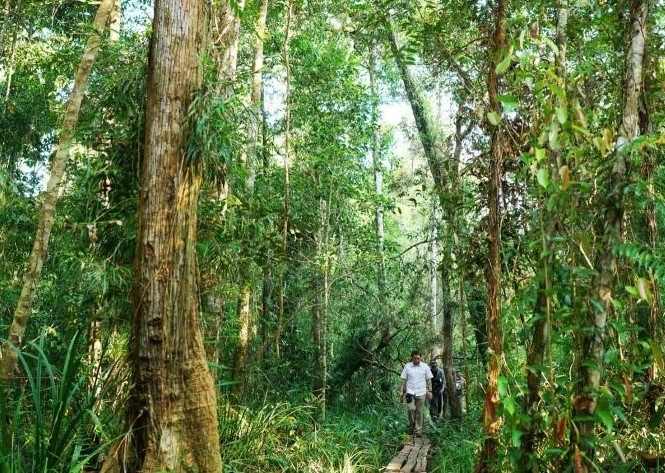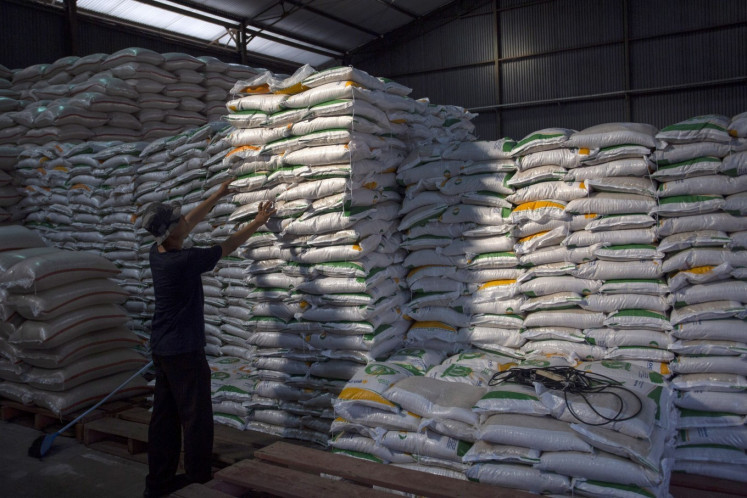Popular Reads
Top Results
Can't find what you're looking for?
View all search resultsPopular Reads
Top Results
Can't find what you're looking for?
View all search resultsHow voluntary carbon markets can help Indonesia meet its climate goals
While Indonesia is currently the eight largest greenhouse gas emitter in the world, it also has the second largest global potential to provide low-cost, nature-based solutions for decarbonization.
Change text size
Gift Premium Articles
to Anyone
I
ndonesia is stepping up its decarbonization efforts. In the past few months, the country has taken crucial steps to execute its ambitious climate action agenda that includes attaining net zero by 2060 or sooner, and reducing its greenhouse gas emissions by 29 percent (or 41 percent with international support) by 2030, according to the country’s nationally determined contribution (NDC).
The government has passed regulations on carbon pricing with the objective of setting up a compliance carbon market, which includes putting in place an emission trading system (ETS) by 2025 to incentivize emissions reductions in high-emitting economic activities. In a compliance ETS, companies covered by the regulation face a fixed cap on total emissions, with rights to emit CO2 equivalent called allowances that are either auctioned or allocated by the government to covered companies/entities.
To support this effort on decarbonization and the development of a carbon market ecosystem, we believe launching a voluntary carbon market (VCM) is a key part of accelerating progress on Indonesia’s climate aspirations.
In a VCM, companies can buy and sell carbon credits on a voluntary basis in return for financial incentives. For example, a developer can voluntarily develop an emission mitigating project such as forest conservation, get it registered and verified by an independent body, and then sell the ensuing carbon credits to another company or entity. Companies/entities use these carbon credits to compensate and/or neutralize their emissions during their decarbonization journey and to ultimately achieve net-zero.
A VCM can operate in tandem with ETS to establish emission mitigating measures across a range of sectors, as seen in many countries such as the United Kingdom, Mexico, Colombia, and China. Compliance markets typically target more emission-intensive sectors such power, oil and gas and heavy industry such as steel and cement.
Meanwhile, a VCM could help attract participation from other industries such as forestry and agriculture that are more difficult to incorporate into an ETS. The carbon credits generated from this voluntary market may be used to meet compliance carbon market obligations (when regulations allows). The new business building and green financing opportunities arising from such a market will push businesses across industries to launch more carbon-reduction initiatives.
Setting-up a VCM prior to ETS will help provide inputs for the design of the national ETS, on matters like the ideal sector coverage, emission limits and the use of carbon standards. VCMs will also help build an ecosystem of buyers, sellers, and service providers that have the right set of capabilities on carbon accounting and emission reduction verification, as well as the necessary infrastructure like an exchange or marketplace.
While Indonesia is currently the eight largest greenhouse gas emitter in the world, it also has the second largest global potential to provide low-cost, nature-based solutions for decarbonization, according to McKinsey Nature Analytics. This makes Indonesia uniquely positioned to capture value from carbon markets, given the significant scale of potential demand and supply. Indeed, according to our estimates, Indonesia’s carbon credit demand could reach approximately 60-85 million tons of CO2e per year by 2030.
Meanwhile, in terms of supply, we estimate that the country could have more than 60 million tons of CO2e worth of carbon credit “surplus”, which could potentially help other countries in meeting their emission reduction targets.
Given the nascency of Indonesia’s carbon trading market, however, businesses and the government could leverage the lessons learned by early adopters of VCMs elsewhere in the world.
Indeed, many choices come into play while launching a robust VCM strategy. For example, what are the chosen sectors; will the offsets be marketed domestically or internationally; will they trade over the counter or through an exchange; and what standards and methodologies would apply to them.
The government and private sector companies planning to set up such a market will also need to ensure the carbon credits are of high quality, with a robust and transparent methodology to help avoid double counting. A reliable and transparent emission reporting system, covering the full MRV (measurement, reporting and verification) cycle, is a key enabler and will need to be put in place. Not doing so could result in low market integrity, thereby causing higher volatility in the price of offsets as well as credibility issues around the offset’s emission target achievement.
Launching a pilot program with select companies could help participants build necessary capabilities and test the mechanism of such a carbon market before fully scaling up. The Indonesian government is already exploring the possibility of starting a VCM pilot with state-owned enterprises. Other private sector companies may also benefit from following suit.
A successful VCM strategy cannot be achieved in isolation. The government could take the lead in designing the right regulatory framework; businesses need to set decarbonization goals and explore low carbon solutions; and industry associations need to bring the two together by creating public-private taskforce collaborations and other targeted forums.
The time is ripe for various stakeholders in Indonesia to come together to play their part in tackling this important challenge.
***
Martin Santoso is an associate partner in McKinsey Indonesia office, Vivek Lath is a partner in McKinsey Singapore office where Vishal Agarwal is a senior partner. Juan Carlos Arredondo and Thomas Kansy from Vivid Economics contributed to this article.











